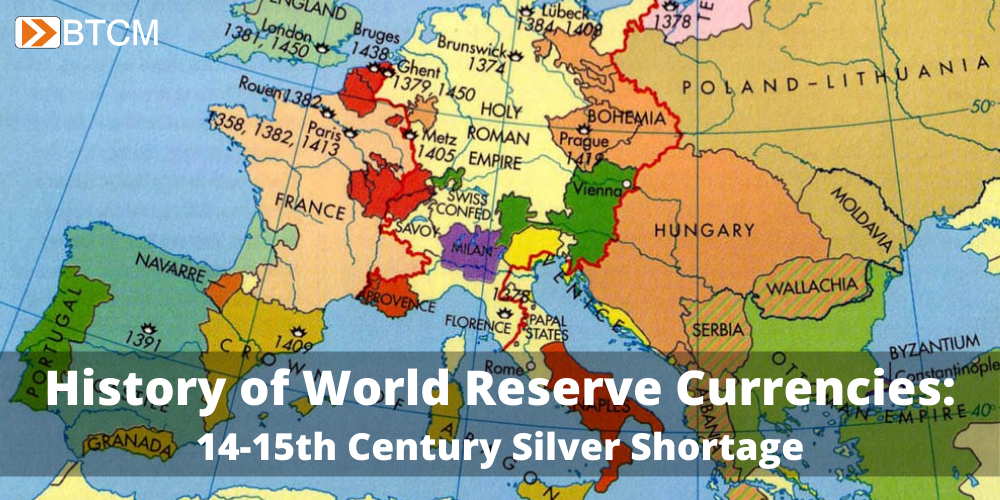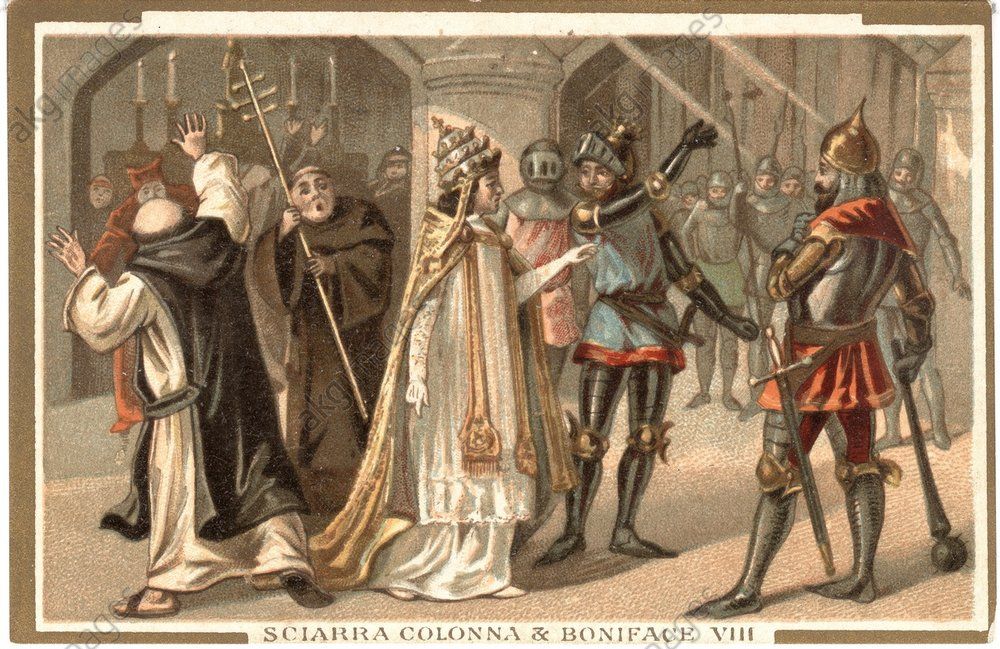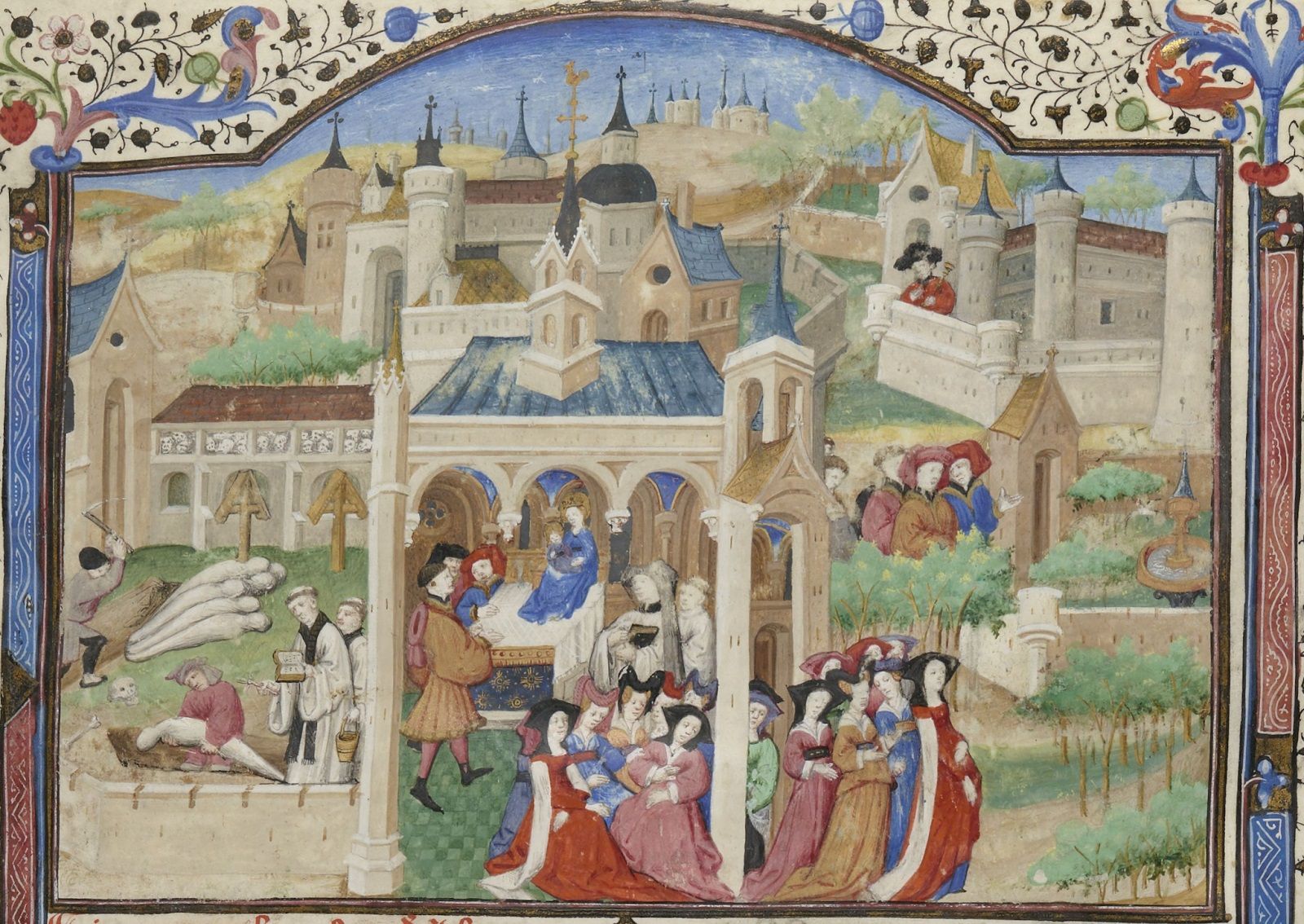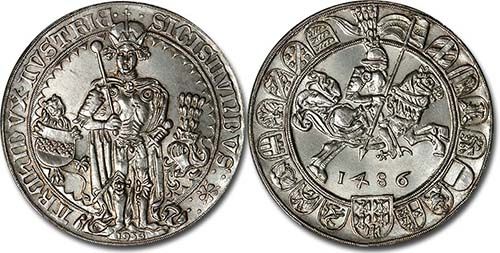History of World Reserve Currencies: Part 2 - The 14-15th Century Silver Shortage

Part 1: The Italian Renaissance Standard 1250-1535
We covered the florin and ducat in Part 1, a period that lasted approximately 280 years (1252 - 1535), which ended with the rise of the Spanish Empire and vastly more efficient maritime trade routes. The long life of the florin does not conform to the conventional narrative that reserve currencies last for 75-100 years. We will discuss why that is throughout the rest of this series but in the discussion below, we discuss the monetary stresses building under the surface in Europe during the latter half of the Italian Renaissance Standard and which culminated in a dramatic return to a silver standard.

Before we dive in, two important notes. (1) Changes of reserve currency usually follow a period of new global trade conditions. Changes to the global reserve currency are not what bring about new conditions in trade. Changes are, for the most part, a product of those new conditions. Though the gold ducat standard seemed secure at its peak at the end of the 15th Century, there were a series of events that weakened that order and naturally led to a new dominant currency better suited to the new trade regime.
(2) Reserve currency standards are larger than a single State. The florin for example, was of a standard weight and fineness, but not all florins were struck in Florence. Genoa, Milan, Venice, Hungary, the Papacy, the Low Countries, Spain, and the Holy Roman Empire all minted a gold coin equal to a florin/ducat. Gold was the standard money and the florin was the standard denomination. We see below, as we move toward the Spanish real, there were many silver coins of this era but they typically followed the same standard.
The 14-15th Century European Silver Shortage
Silver was the center of a fascinating evolution in money during the 1300-1400s. Though much of the Mediterranean and Europe were on a gold standard, silver remained a very important currency. Indeed, Europe might have remained on a silver standard the whole time, from Charlemagne to Napoleon, if it wasn't for several specific developments: the centralization of State power and the reduction of Church authority, the accompanying widespread wars and the debasement of coins, and a crash in European population and production resulting in a large trade imbalance. These events provided the incentives for exploration and the creation of a new global maritime trade network, which, interestingly, led people back to a silver standard. Let's quickly walk through some of these factors.
State Power over the Church
In Medieval Europe the Catholic Church enjoyed power over kings and had the final say when it came to dispute resolution. Wherever possible, wars between Catholic kings were avoided in favor of intermarriage but that changed abruptly in the 1300s. We can use Philip IV, King of France (1285 - 1314) and Navarre (1284 - 1305) as a particularly good example. He was a capable and opinionated King, responsible for restructuring France out of feudalism and toward a more modern central State.
Constant warfare against England, Flanders, and Aragon led quickly to deficits for Philip, who turned to heavy taxation and debasement of coins to pay for his military campaigns. In the first several years of this reign, Philip reduced the silver content of French coins by 2/3rds. Still not enough to pay for all of his plans, he extended the tax burdens to the clergy with a 50% income tax.
Pope Boniface VIII promptly responded to this historic overreach by trying to maintain Church supremacy with the Unam Sanctum, a Papal announcement that the secular realm was strictly subordinate to the spiritual realm. Philip couldn't stand for this interference and moved to have the Pope kidnapped. Boniface VIII died a few weeks later from injuries sustained in the attack. The Church, under heavy French influence, elected a new Pope, Clement V, who immediately moved the Papacy from Rome to Avignon. The Papacy remained in Avignon from 1309 - 1376 under the unofficial control of the French King.

While in Avignon, the Church lost much of its legitimacy across Europe, setting the stage for further confiscations of Church lands and debasement of currencies as centuries of warfare lay ahead. The Church's loss of prestige also had far reaching effects in the form of the Western Schism and subsequent Reformation. But perhaps the largest single human and economic event to ever hit Europe was the Black Death.
Black Death and Trade Imbalance

The Black Death (1347-1351) was the worse pandemic perhaps the world has ever seen. Estimates are 1/3 to 1/2 of the European population died during those few short years, and certain regions suffered more than others. While the scarcity of labor helped to push wages higher for those who survived, tax increases offset those gains and, importantly, overall production plummeted. International trade during the mid-14th Century became dramatically one-sided. Silver streamed out of Europe to the Near East, as it became Europe's major export. The other export industry that was booming prior to this period, woolen textiles, peaked right around these fateful plague years.
Silver demand had replaced that of gold when the Byzantines stopped minting gold coins in 1367 in favor of silver coins, and by the time of the fall of Constantinople, silver was the primary metal used in commerce with the Ottoman Empire. The perfect storm had hit Europe, plague and war ravaged the population, production crashed, trade slowed, growing authoritarian States dramatically debased coins, and silver flowed East. By 1450 the silver content of European coins was less than 5% and Europe had suffered a 100 years of economic depression.
The decline in European population continued well passed the plague years of the 1350s (however, plague did return every decade in a less virulent form). The population did not grow again until the 1470s. An interesting coincidence is the 1470s were the same decade in which new large silver deposits were discovered in the German mountains, and we'd argue the quality of money directly affected demography.
End of the Shortage
Prior to the inflow of silver from the Americas after 1535, silver output in Europe itself quintupled from the 1470s to the 1540s, mainly from new silver deposits in Austria and Bohemia. This kicked off a silver boom that lasted several decades and bootstrapped an economic recovery, pulling Europe out of the Late-Medieval Depression. Many different types of high quality silver coins were minted during this period. Remember, there was a silver shortage in Europe, so, when high quality money hit European markets, it was like a shot of adrenaline.

The most important of the early silver coins was the large Guldengroschen minted in 1486, named for its equivalent value to the gold gulden, and the silver coin weighed in at 32 grams. Around the year 1500, a central European standard emerged of a 29.2 gram Guldengroschen, making eight to the Cologne mark (approximately 234 grams) and 16 to a pound. Therefore, these silver coins would be familiar to us today as roughly one ounce. Substantial variation from kingdom to kingdom, or mint to mint, existed with weights ranging in this era from about 25 grams up to 30 grams.
In the next post, we continue our exploration of the re-emergence of a silver standard with developments in Spain during this time then follow the Spanish real through the 16th and 17th Centuries. We initially intended to include that subject in this post, however, some of the background information was fascinating enough to stand on its own. In the year 1500, Europe was ready to explode with a new found vigor and productive energy, powered by high quality and globally accepted money.




